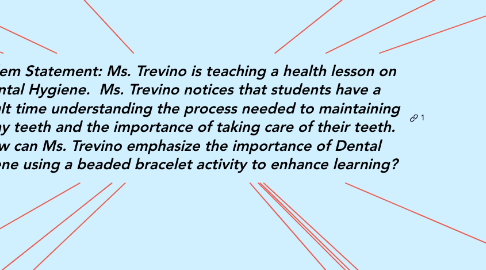Problem Statement: Ms. Trevino is teaching a health lesson on Dental Hygiene. Ms. Trevino notices that students have a difficult time understanding the process needed to maintaining healthy teeth and the importance of taking care of their teeth. How can Ms. Trevino emphasize the importance of Dental Hygiene using a beaded bracelet activity to enhance learning?
por Rosalva Trevino



